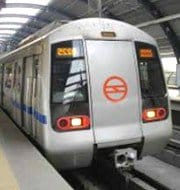Union Cabinet approves new Metro Policy
The Union Cabinet has approved a new policy for expanding and regulating metro rail services in cities across India. This is the first such policy document prepared by the Union Urban Development Ministry since metro rail operations began in Delhi in 2002.
The policy gives a big boost to private players by making private participation mandatory for all the three funding options. They are (i) Public-private partnership (PPP) model with central assistance under the Viability Gap Funding (VGF) scheme of the Union Finance Ministry, (ii) Grant from the Centre under which 10% of the project cost would be given as a lump sum, (iii) 50:50 equity sharing model between the Central and State governments.
Salient Features of new policy
Private investments: The policy opens a big window for private investments across a range of metro operations by making PPP component mandatory for availing central assistance for new metro projects. It will help to meet the huge resource demand for capital intensive high capacity metro projects.
Last mile connectivity: The new policy seeks to ensure focusing on a catchment area of five kms for last mile connectivity on either side of metro stations. It makes mandatory for States to commit last mile connectivity in project reports by providing necessary feeder services, Non-Motorised Transport infrastructure like cycling and walking pathways and para-transport facilities. States, proposing new metro projects will be required to indicate such proposals and investments to be made for such services in the project reports.
Alternatives: It mandates Alternate Analysis, requiring evaluation of other modes of mass transit like Light Rail Transit, Tramways, BRTS (Bus Rapid Transit System), Metro Rail and Regional Rail in terms of demand, capacity, cost and ease of implementation to ensure that least cost mass transit mode is selected for public transport
Urban Metropolitan Transport Authority (UMTA): It makes mandatory for setting up UMTA to prepare Comprehensive Mobility Plans for cities for ensuring complete multi-modal integration for optimal utilization of capacities.
Third party assessment: It calls for rigorous assessment of new metro proposals and also independent third party assessment by agencies to be identified by the Government like the Institute of Urban Transport and other such Centres of Excellence.
Transit Oriented Development (TOD): It mandates TOD to promote compact and dense urban development along metro corridors since TOD reduces travel distances besides enabling efficient land use in urban areas. It will ensure that urban mass transit projects will not merely be seen as urban transport projects but more as urban transformation projects.
Role of States: States need to adopt innovative mechanisms like Value Capture Financing (VCF) tools to mobilize resources for financing metro projects. It must be done by capturing a share of increase in the asset values through ‘Betterment Levy’. States will be also required raise low cost debt capital through issuance of corporate bonds for metro projects. It also empowers States to set up permanent Fare Fixation Authority (FFA) for timely revision of fares and make rules and regulations in this regard.
Financial viability: It requires the States to clearly indicate in the project report the measures to be taken for commercial/property development at stations and on other urban land to ensure financial viability of metro projects. States are also require to raise revenues through other means of maximum non-fare revenue generation through lease of space, advertisements etc., backed by statutory support.
Proposed ways for private sector participation in O & M of metro services
Cost plus fee contract: Private operator will be paid a monthly/annual payment for O&M of metro system. It can have a fixed and variable component depending on quality of service. Operational and revenue risk will be also borne by the owner.
Gross Cost Contract: Private operator will be paid a fixed sum for the duration of the contract. Operator will bear the O&M risk while the owner will bear the revenue risk.
Net Cost Contract: Operator collects the complete revenue generated for the services provided. If revenue generation is below the O&M cost, then owner may agree to compensate.
Month: Current Affairs - August, 2017


